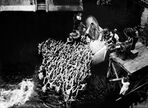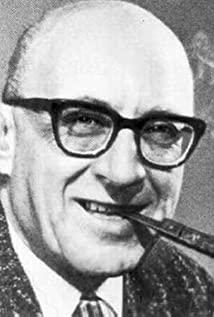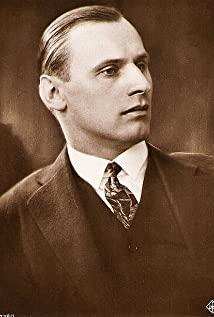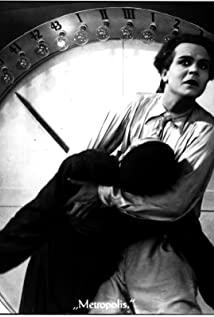#nonsense#
☞Let's say it first, I'm just an ordinary junior high school student, and writing movie reviews is just to exercise my writing style as a way of writing after reading. No one says that only big guys can write, right? If there is something wrong, please teach me, don't curse.
I found this film in the middle of the night, and I said I would get up and watch it again, but I couldn't help but finish it. The movie I knew by chance, I thought it was an old movie in the 1980s, but it turned out to be released in 1927. I was surprised, and the fun of "archaeology" was instantly added. (It can be seen from the side that my history is really bad. There was actually a movie in 1927!) Let me say something first, station B is a great critic! ! Serious spoilers below, be careful.
Just a quick search, this movie actually exists. This estimate is a kind of imagination of the predecessors about the "future". There is a labor city deep on the surface, and the ground is a "post-generation club" for the nobles to survive. The geographical location is also a metaphor for class status. People in the labor city are mechanically numb. A moment of rest will be swallowed up by the machine, but soon, a new person will take over. Above the ground, it is obviously a "paradise". People have less embarrassing jobs and have entertainment after work. This setting reminds me of "Beijing Folding", but it is different. "Beijing Folding" is due to the shortage of resources. Helpless to divide the city into several parts, and this film is more to highlight class differences. Back in the movie, the male protagonist is the son of the owner of the city, innocent and cute. In one play, the male protagonist saw Maria leading the labor children, and heard Maria calling him, "These are your brothers and sisters." He followed in Maria's footsteps and ran to In the dungeon, he did not see Maria. Anyway, he saw the suffering of the laborers, the difficult and dangerous working conditions, and in his mind, the machine turned into a demon that would eat people, devouring the lives of the laborers. The indifferent eldest young master found his father and questioned his father. The father did not give him a clear answer, and the young master was ready to find it himself. He ran to the dungeon and exchanged clothes with a laborer, swapping identities. The exchanged laborers couldn't help but threw themselves into the sensual places, while the young master realized in the inhuman labor that "it turns out that ten hours can be so hard." But it was precisely because he mixed in with the laborers that he was able to rebuild Maria. After the shift, he followed other workers into the basement and met Maria. Mary is the Virgin of the workers, she teaches them to wait, for the emergence of "regulators" who can regulate the people and the management. At this time, the male protagonist understands that he is the adjuster. However, this scene was also seen by the male protagonist's father. He asked the Frankenstein in the city to transform the robot that he was about to make into Maria's appearance, so that she could divide the relationship between Maria and the workers. Frankenstein agreed, but at the same time, because he and the male protagonist's father both liked the male protagonist's mother and hated the male protagonist's father, his real motive was to destroy the city and the male protagonist. He grabbed Maria and let the machine Maria go to disturb people's minds. Robot Maria ran to the dungeon and told the workers that they had waited too long for the moderator to appear and that they should do it themselves. Frankenstein locked the heroine in the room and told her his real purpose proudly. All this was also heard by the father of the hero outside the door. The angry city lord broke into the door, fought with Frankenstein, and rescued Maria. Instigated by the Machine Maria, the workers are light Yi's was provoked. At this time, the male protagonist appeared and shouted that she was not the real Maria. People were briefly puzzled, but someone shouted that he was the son of the city lord, and they lost all judgment and began to hunt down the male protagonist. After the hero ran away, the angry people rushed to the dungeon like a torrent, destroyed all the machines, and was about to destroy the mainframe. The foreman in charge of the mainframe told them that if the mainframe was destroyed, the flood would flood the dungeon, but no one Listening, people destroyed everything like a carnival and sang and danced happily on the ruins. On the other side, a flood of water poured into the residential area of the dungeon. The female protagonist who had just escaped ran to the residential area to gather all the children. The male protagonist also arrived at this time. Together, they rescued the children and brought them to the ground. The ignorant workers were still enjoying the joy of victory, and the foreman shouted angrily: "Where are your children?" Only then did people realize the danger of the children, and the machine Maria had already disappeared, and some people in the crowd began to regret: "It's all her fault, it's all the witch's fault." So people rushed to the ground again, trying to catch the "witch". They found Maria, but took her as a machine Maria. Maria was frightened by their battle and ran away. On the way, they met a crowd led by machine Maria. In the middle, they grabbed Maria the Machine, tied her to a post, and tried to burn her to death. Maria, who was hiding quietly in the dark, was still wondering about the development of the situation when she was first discovered by Frankenstein, who caught her and prepared to take her away. The fire scorched the robot Maria, and the male protagonist's helper ran out to tell everyone that their child was still alive, and the robot Maria was burned into a prototype. Only then did people calm down and the women fell to the ground. At this time, they saw Frankenstein and Real Maria, and the male protagonist rushed upstairs to fight with them. In the end, Frankenstein fell to his death, and the male protagonist rescued Maria. The turmoil finally ended. Under the guidance of Maria, the male protagonist acted as a mediator and finally reconciled the worker and his father. "It's all her fault, it's all the witch's fault." So people rushed to the ground again, trying to catch the "witch". They found Maria, but took her as a machine Maria. Maria was frightened by their battle and ran away. On the way, they met a crowd led by machine Maria. In the middle, they grabbed Maria the Machine, tied her to a post, and tried to burn her to death. Maria, who was hiding quietly in the dark, was still wondering about the development of the situation when she was first discovered by Frankenstein, who caught her and prepared to take her away. The fire scorched the robot Maria, and the male protagonist's helper ran out to tell everyone that their child was still alive, and the robot Maria was burned into a prototype. Only then did people calm down and the women fell to the ground. At this time, they saw Frankenstein and Real Maria, and the male protagonist rushed upstairs to fight with them. In the end, Frankenstein fell to his death, and the male protagonist rescued Maria. The turmoil finally ended. Under the guidance of Maria, the male protagonist acted as a mediator and finally reconciled the worker and his father.
Huh... This is a simple story similar to a fairy tale, and it's a bit unfinished. How could it be so easy to reconcile? I feel that it was because people at that time were naive, and the standard fairy tale had a happy ending. Although it was a short reconciliation, it didn't The actual change is that the workers return to the dungeon and still live the same life. I feel that there should be a sublimation and discussion about system changes here, but it stopped abruptly. However, as a sci-fi film, its shooting skills and scene construction are still very good even now, and I was surprised at the beginning. The robot-like migrant workers have consistent movements, no emotions, and orderly, while the people living in the city live Colorful and witty, the strong contrast is very impactful, and what the director wants to express is self-evident. The imagination of the city that appears many times in the film is very advanced. Those buildings are not outdated now, maybe they can win an award? I suspect the track in the sky in the movie is the prototype for light rail. I have also seen some deciphering of the shooting methods of special scenes in Chaplin's movies before. All these make people feel that the most important thing in making a good (science fiction) movie is not technology and special effects, but rich imagination!
The heroine's acting skills are also really good. Both the pure saint and the crazy slut can act very well. They are completely like two people. There is also the depiction of the people, which is real and terrifying. When you read it, you will naturally think of the description in "The Crowd". The people are ignorant and easily incited. They think their atrocities are just, and they regret it in the end. It turned around and attacked the original leader...
This is a wonderful viewing experience, and I am interested in continuing to dig old movies to watch.
View more about Metropolis reviews











